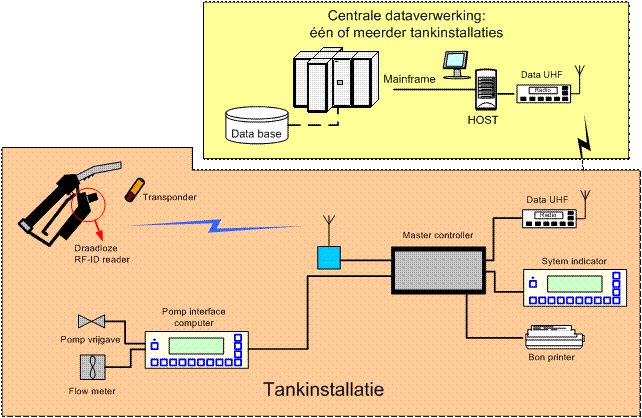
The vehicle is being identified through the transponder which is placed near the vehicle's tank filler opening. After the nozzle has been placed in the tank filler opening, the transponder is being read. When the transponder has been verified, the pump will be enabled and the amount of fuel will be registered. A central computer processes this data and forwards it to the accountancy computer which can sent the invoice to the customer.
We have designed a fuelling system which globally works in the following way:
- When the nozzle has been taken from the holder, the wireless RFid reader starts scanning.
- The vehicle is being identified through the transponder near the vehicle's tank filler opening.
- Based on the transponder, the Master controller verifies the stored data. This can be for example: the customer data, maximum fuel take, the vehicle type.
- When the transponder has been verified, the pump will be enabled and the amount of fuel will be registered.
- After placing the nozzle back in the holder, all data is being saved in the Master controller.
- The Master controller prints a tank transaction ticket.
- A central host computer retrieves the data from the Master controller (through a VHF datalink, for example) and saves it in the central database.
- The central host computer makes the bills, which will be sent to the customers/clients.
Another advantage of this system is the ability to communicate with the vehicle. This has been done to read out operational and technical data from the vehicle.
Through the development of this system, a reduction in the operational fuel costs can be achieved.
The NMI ('Nederlands Meet Instituut') takes care of certifying and checking the installation of this product.
Application of our fuelling system (dutch):



